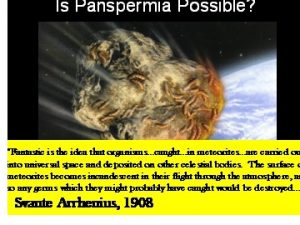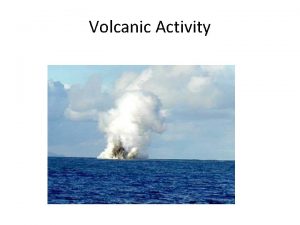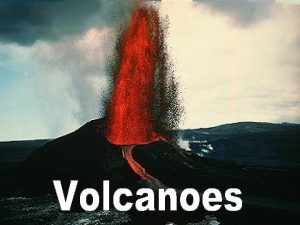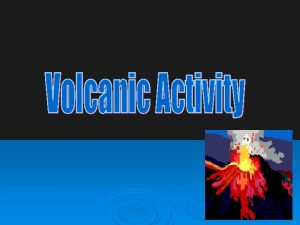Volcanoes Magma Reaches the Earths Surface KEY CONCEPT





- Slides: 5

Volcanoes

Magma Reaches the Earth’s Surface KEY CONCEPT: When a Volcano erupts, the force of the expanding gases pushes magma from the magma chamber through the pipe until it flows or explodes out of the vent. • The volcano has a pocket of magma below the surface called a magma chamber. A long tube, called a pipe, connects the magma chamber to the surface. • The opening at the top of the pipe is called the vent. • When it leaves the volcano magma becomes lava.

Kinds of Eruptions KEY CONCEPT: Geologists classify volcanic eruptions as quiet or explosive. • How a volcano erupts depends on the magma. • A quiet eruption moves slowly because it is low in silica and flows very easily. • An explosive eruption has magma that is high in silica and does not flow easily. Magma builds up until it explodes out of the vent.

Stages of Volcanic Activity KEY CONCEPT: Geologists often use the term active, dormant, or, extinct to describe a volcano’s stage of activity. • Active volcanoes are erupting or showing signs that it will erupt soon. • Dormant volcanoes are no longer erupting, but can again in the future. • Extinct volcanoes are not likely to erupt any longer.

Where Volcanoes Form KEY CONCEPT: Volcanoes form along the boundaries of the Earth’s plates. • A Volcano is a weak spot in the crust where melted material comes to the surface. • Most Volcanoes happen at plate boundaries. • Lava can build up to form islands and mountains. • Some Volcanoes form above a hot spot when magma erupts through the crust and reaches the surface.









